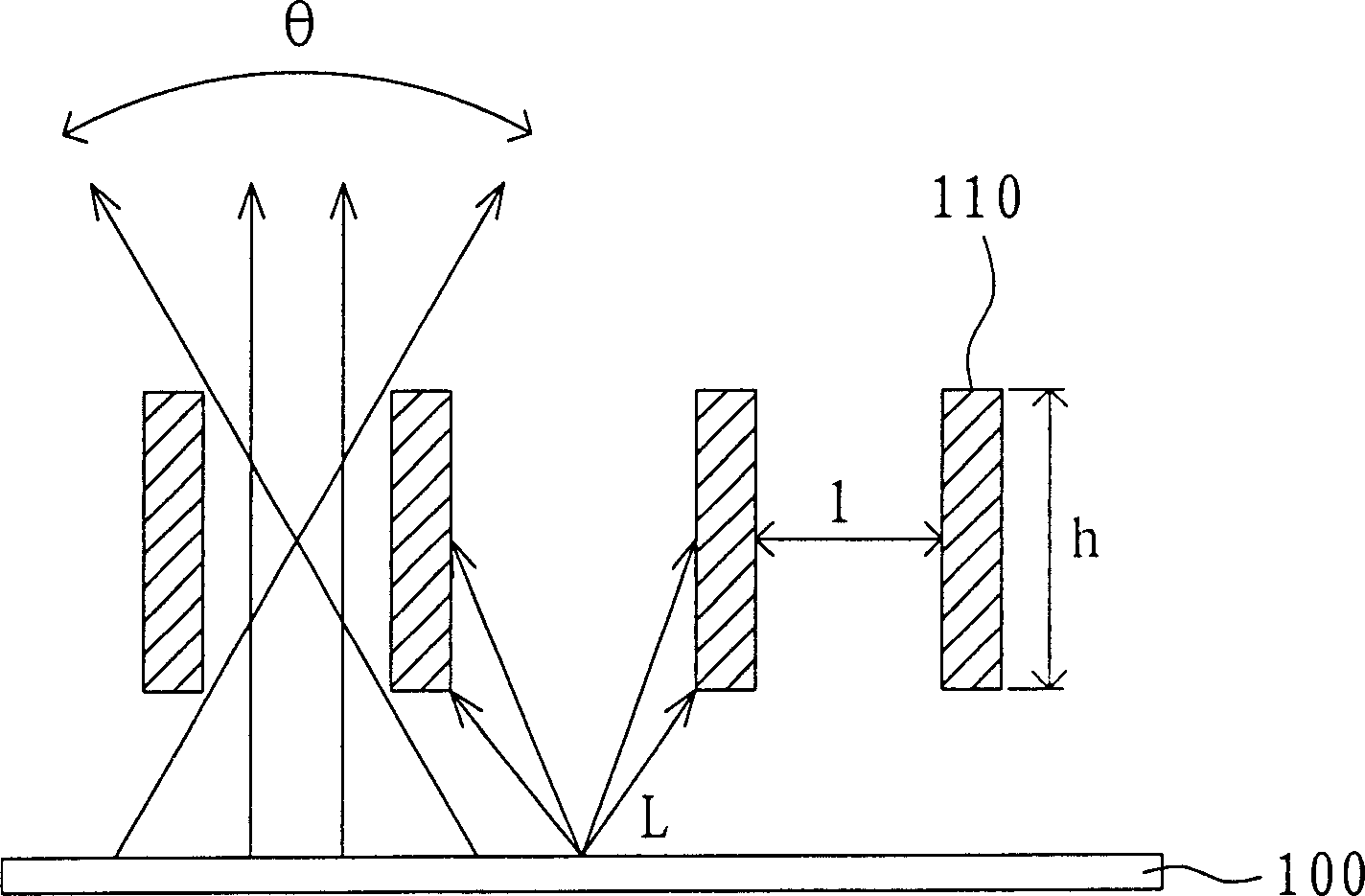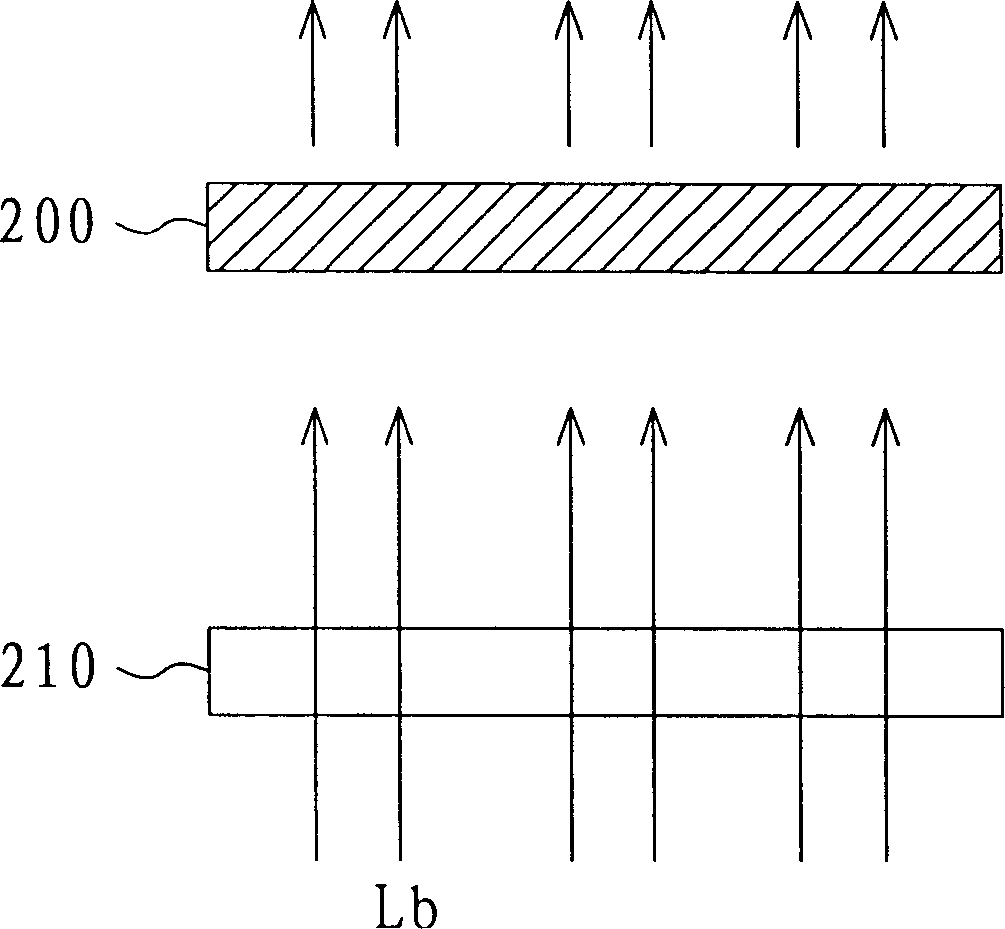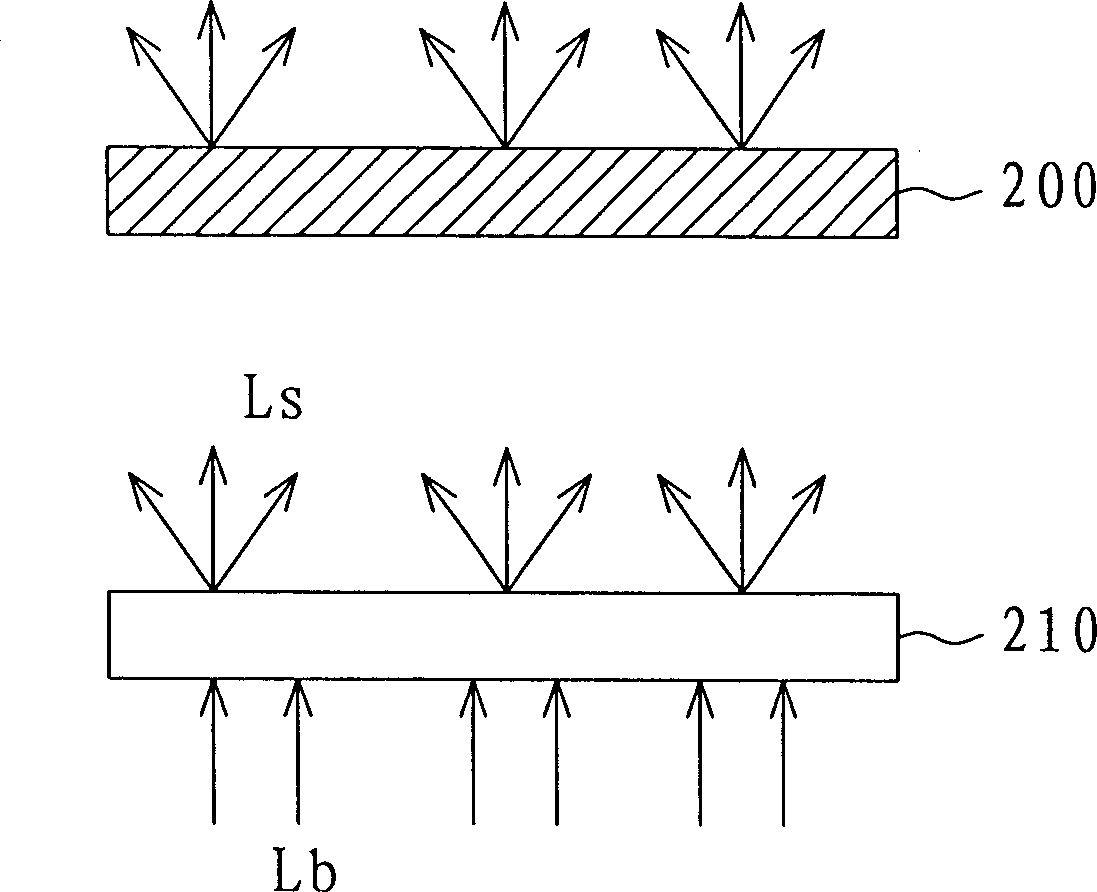Liquid crystal display capable of adjusting visual angle and method of adjusting visual angle thereof
A liquid crystal display and viewing angle technology, which is applied to static indicators, instruments, nonlinear optics, etc., can solve the problems of decreased display brightness, inability to switch viewing angles, and inconvenient use
- Summary
- Abstract
- Description
- Claims
- Application Information
AI Technical Summary
Problems solved by technology
Method used
Image
Examples
example 1
[0029] Please refer to Figure 5A and Figure 5B , which is a simplified cross-sectional view of a liquid crystal display in a wide viewing angle operation mode according to the first example of the present invention. When the liquid crystal display 400 is in the wide viewing angle operation mode, the entire first liquid crystal layer 434 can be driven to a state where the phase delay Δnd1 is zero. For example, when the first pixel voltage is 0V, the liquid crystal molecules in the first liquid crystal layer 434 are in a straight state. At this time, the backlight Lb is incident to the second liquid crystal layer 444 through the first liquid crystal layer 434 , and the information to be displayed is determined by the second liquid crystal layer 444 . Of course, the entire second liquid crystal layer 444 can also be driven to a state where the phase delay Δnd2 is zero, and the information to be displayed is determined by the first liquid crystal layer 434 .
[0030] As shown i...
example 2
[0037] In the second example, the driving method of the wide viewing angle operation mode is the same as that of the first example. However, the way of driving the liquid crystal layers 434 and 444 in the narrow viewing angle operation mode is different from the first example.
[0038] Please refer to Figure 6A and Figure 6B , which is a simplified cross-sectional schematic diagram of a liquid crystal display in a narrow viewing angle operation mode according to the second example of the present invention. When the liquid crystal display 400 is in the narrow viewing angle operation mode, the information to be displayed can be partially represented by the liquid crystal layer 434 and partially represented by the liquid crystal layer 444 . When viewed squarely, as Figure 6A As shown, the phase delays Δnd1 and Δnd2 corresponding to the consecutive pixels P11 , P12 , and P13 in the liquid crystal layers 434 and 444 are both λ / 4 and 0, respectively. Therefore, the phase dela...
example 3
[0041] In the third example, the driving method of the wide viewing angle operation mode is the same as that of the first example. However, the way of driving the liquid crystal layers 434 and 444 in the narrow viewing angle operation mode is different from the first example.
[0042] Please refer to Figure 7A and Figure 7B , which is a simplified cross-sectional view of a liquid crystal display in a narrow viewing angle operation mode according to a third example of the present invention. When the liquid crystal display 400 is in the narrow viewing angle operation mode, the narrow viewing angle is not perpendicular to the direction of the liquid crystal layers 434 and 444 , but has a right oblique angle Ψ, such as 45 degrees. According to the angle Ψ, the backlight Lb that is transmitted through the liquid crystal layer 444 corresponding to the consecutive pixels A5 - A9 is emitted from the liquid crystal layer 434 corresponding to the pixels A1 - A5 . The phase delay Δn...
PUM
 Login to View More
Login to View More Abstract
Description
Claims
Application Information
 Login to View More
Login to View More - R&D
- Intellectual Property
- Life Sciences
- Materials
- Tech Scout
- Unparalleled Data Quality
- Higher Quality Content
- 60% Fewer Hallucinations
Browse by: Latest US Patents, China's latest patents, Technical Efficacy Thesaurus, Application Domain, Technology Topic, Popular Technical Reports.
© 2025 PatSnap. All rights reserved.Legal|Privacy policy|Modern Slavery Act Transparency Statement|Sitemap|About US| Contact US: help@patsnap.com



